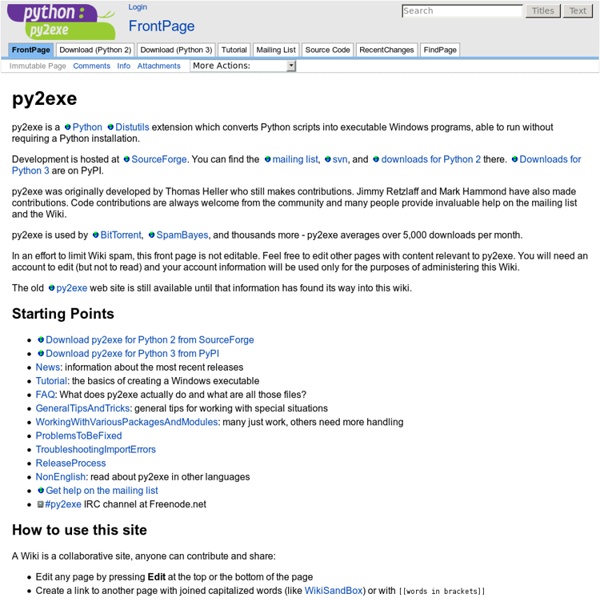



7 Ways to Lean to Code Right Now for Free Learning to code is one of the most powerful and satisfying things you can ever do. If you’re a designer, learning to code can help you understand what you’re creating for, and if you’re looking to build a startup from scratch, being a technical founder can make things exponentially easier for you. No matter why you want learn, the only thing you really need is curiosity. But if you’re just starting out as a novice and don’t know where to begin, here’s a list of 7 ways to start learning how to code right now for free: 1. Processing is an open source programming language and environment for people who want to create images, animations, and interactions. ➤ Processing (Reference, Tutorials, Wiki, Forum, Inspiration) 2. Codecademy bills itself as “the easiest way to learn how to code,” and thanks to this startup, learning to code online has never been so accessible. ➤ Codecademy 3. Bloc, a new educational startup, makes it easy for you to start writing in Ruby. ➤ Bloc 4. ➤ Meetup, Hackathons 5.
opensocial-python-client - Project Hosting on Google Code Better than french toast! The OpenSocial Python Client Library enables you to work with OpenSocial data on your server, in the language of your choice - as long as it's Python :P See the project roadmap for version information. Hyperlink Python, Evaluate a Variable value as a Variable Krebs on Security
The Shapes of CSS - StumbleUpon Learn Development at Frontend Masters CSS is capable of making all sorts of shapes. Squares and rectangles are easy, as they are the natural shapes of the web. We also get the ::before and ::after pseudo elements in CSS, which give us the potential of two more shapes we can add to the original element. Square Rectangle Circle Oval Triangle Up Triangle Down Triangle Left Triangle Right Triangle Top Left Triangle Top Right Triangle Bottom Left Triangle Bottom Right Curved Tail Arrow via Ando Razafimandimby Trapezoid Parallelogram Star (6-points) Star (5-points) via Kit MacAllister Pentagon Hexagon Octagon Heart via Nicolas Gallagher Infinity via Nicolas Gallagher Diamond Square via Joseph Silber Diamond Shield via Joseph Silber Diamond Narrow via Joseph Silber Cut Diamond via Alexander Futekov Egg Pac-Man Talk Bubble RSS Feed via Kevin Huff 12 Point Burst via Alan Johnson 8 Point Burst via Alan Johnson Yin Yang via Alexander Futekov Badge Ribbon via Catalin Rosu Space Invader via Vlad Zinculescu TV Screen Magnifying Glass
Tornado Web Server Tornado is a Python web framework and asynchronous networking library, originally developed at FriendFeed. By using non-blocking network I/O, Tornado can scale to tens of thousands of open connections, making it ideal for long polling, WebSockets, and other applications that require a long-lived connection to each user. Upgrade notes As of Tornado 3.2, the backports.ssl_match_hostname package must be installed when running Tornado on Python 2. This will be installed automatically when using pip or easy_install. Hello, world Here is a simple “Hello, world” example web app for Tornado: import tornado.ioloop import tornado.web class MainHandler(tornado.web.RequestHandler): def get(self): self.write("Hello, world") application = tornado.web.Application([ (r"/", MainHandler), ]) if __name__ == "__main__": application.listen(8888) tornado.ioloop.IOLoop.instance().start() This example does not use any of Tornado’s asynchronous features; for that see this simple chat room. Installation
Installing Packages — Python Packaging User Guide documentation This section covers the basics of how to install Python packages. It’s important to note that the term “package” in this context is being used as a synonym for a distribution (i.e. a bundle of software to be installed), not to refer to the kind of package that you import in your Python source code (i.e. a container of modules). It is common in the Python community to refer to a distribution using the term “package”. Requirements for Installing Packages¶ This section describes the steps to follow before installing other Python packages. Install pip, setuptools, and wheel¶ Securely Download get-pip.py [1]Run python get-pip.py. [2] This will install or upgrade pip. Creating Virtual Environments¶ Python “Virtual Environments” allow Python packages to be installed in an isolated location for a particular application, rather than being installed globally. Imagine you have an application that needs version 1 of LibFoo, but another application requires version 2. The basic usage is like so:
OS Paul Grosss Blog - Useful unix tricks - part 2 Update (2/20/09): Check out Useful unix tricks – part 3 and Useful unix tricks – part 4 I covered a bunch of unix command line tricks in my previous blog post: Useful unix tricks. Here are some more. Learn vi Even if you prefer another text editor (such as emacs), it is worth your time to learn vi. vi is installed on every unix box, whereas emacs and others are not. Use less instead of tail I find that I often want to see the end of a file. % tail /var/log/messages Inevitably, I realize that I need more than the last 10 lines. % tail -n 100 /var/log/messages However, an easier approach is to use less to display the whole file and then jump to the bottom (using Shift+g): % less /var/log/messages Shfit+g Now, I can scroll up and down at will. mkdir -p creates nested directories By default, mkdir will only create a top level folder. % mkdir some/nested/folder mkdir: cannot create directory `some/nested/folder': No such file or directory % mkdir -p some/nested/folder The f flag output looks like: